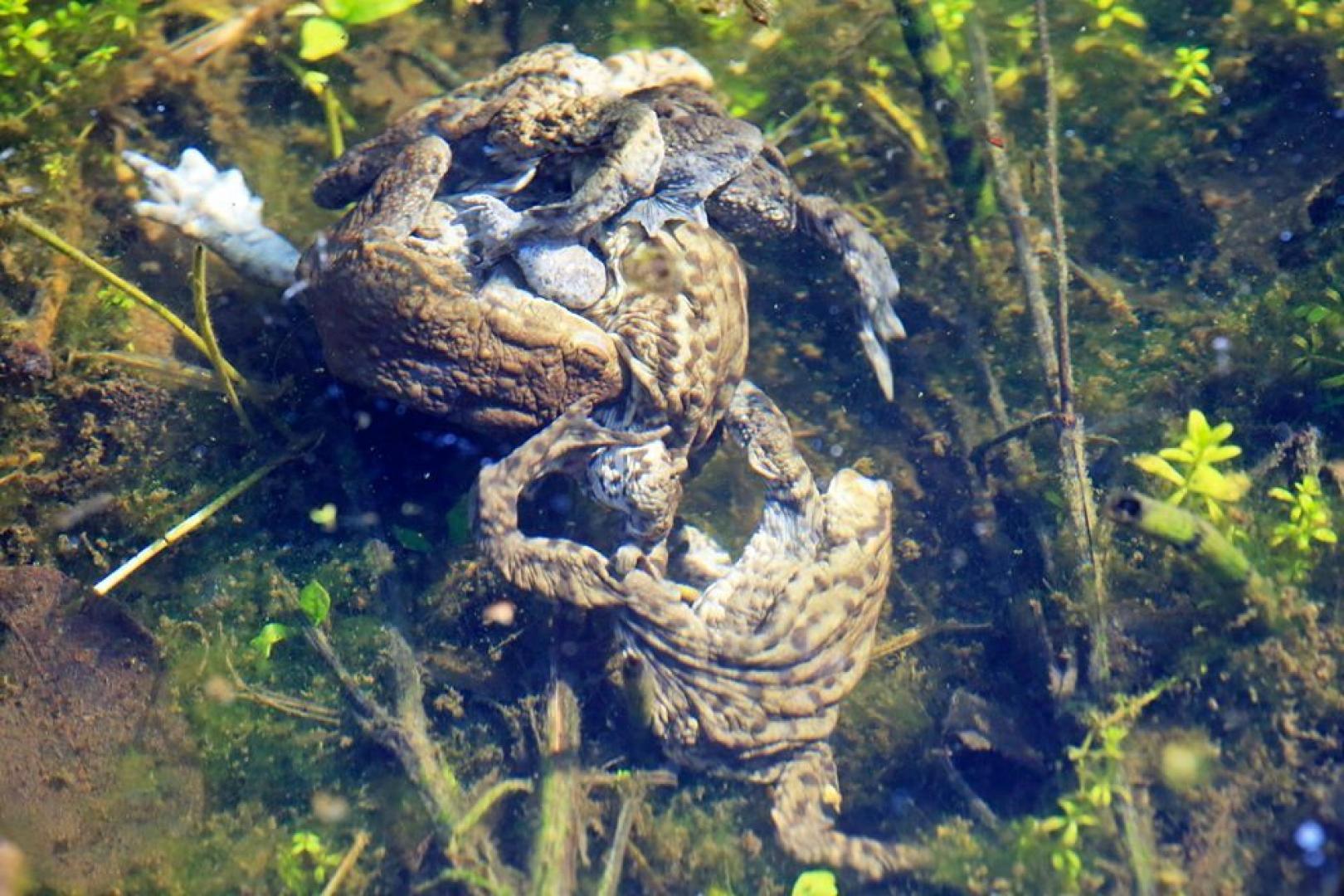HOW many readers collected frog or toad spawn as a youngster?
Thousands of classrooms throughout the country had aquariums with “taddies” and their development was studied with great interest.
These days, discovering a breeding pond is difficult as so many have disappeared.
When frogs and toads get to their ponds, the business of breeding really begins, although frogs arriving early sometimes have a long wait and all they seem to do is sit around.
This is what is known as the pre-spawning period and it can last several weeks as numbers build up.
Any females arriving are quickly grabbed by the males in the amplexus embrace just behind the front legs. The males then become passengers and have to go wherever the female decides to swim.
These females which arrive early or have hibernated in the pond run the risk of being grabbed by more than one male and held in a tight embrace for some time. This can result in the female being wounded or even killed by drowning, such is the ardour of the males.
To my knowledge, nobody knows what triggers them to start spawning, but after dark they head to shallow water, a few inches deep as a rule, altogether in one area of the pond.
The toad males start to croak and this is the noisiest time of the year for all amphibians, however, the common frog is not an impressive performer by comparison.
But what they lack in voice, they make up for in determination.
Many fights take place with rival males trying to force them off their female partner.
On the subject of noise, I don’t know if it’s the same now, but visiting the Stang Forest some years ago, some ponds on the east side contained so many mating toads, their croaking could be heard some distance away.
The best time of year to hear them would be early spring, from February onwards.
Egg laying by frogs mainly takes place in the depths of nigh and the spawn is ejected as a single mass in a matter of seconds.
Fertilisation is external and the male has to be quick off the mark, shedding his sperm precisely as the eggs are laid.
The spawn quickly swells in the water and after only a few minutes the eggs are no longer accessible to sperm in the water, therefore, will not be fertilised.
The male then releases the female, now looking very skinny, and swims away to a quiet spot to recover. The male will then seek out another female.
If frog breeding sounds a frenzied affair, that of the common toad is even more so – a mass splash down into a pond, followed by a rapid burst of spawning which goes on for 24 hours a day without a break unless the weather turns cold.
Toads prefer deeper water – up to a foot – though they embrace the same. The eggs are laid as long strings rather than clumps, which means their behaviour has to be different too, because a string of eggs cannot be shot out in one go.
What happens is that the male feels with his toes when the eggs start to emerge and sheds his sperm over them until the female stops for a rest. The whole business takes several hours with bursts of spawning interrupted by 15-minute breaks. During this time the pair are anchored by the spawn string, which is usually wound around water plants two and three yards long.
Presumably, eggs spread out in a string will be better oxygenated than those in a mass, like frog spawn, but I really don’t know why the two species have evolved such different spawning procedures.
When threatened, toads emit a really horrible odour and play dead. Some puff themselves up to appear larger.
Both species breathe through their skins and have teeth. The average lifespan of a toad can be up to ten years. Their skin is dry and warm, whereas frogs have a smooth, moist surface.
Frogs live on land and water, while toads are landlubbers and only enter the water to breed.
On a different note, the Smallways avocets have arrived back and hopefully will have a successful breeding season and not get washed out as was the case last year.
Dave Moore is a wildlife enthusiast from Hutton Magna.
ADVERTISEMENT
Nature Notes: Amphibian breeding is one heck of a ride
ADVERTISEMENT
ADVERTISEMENT
ADVERTISEMENT






